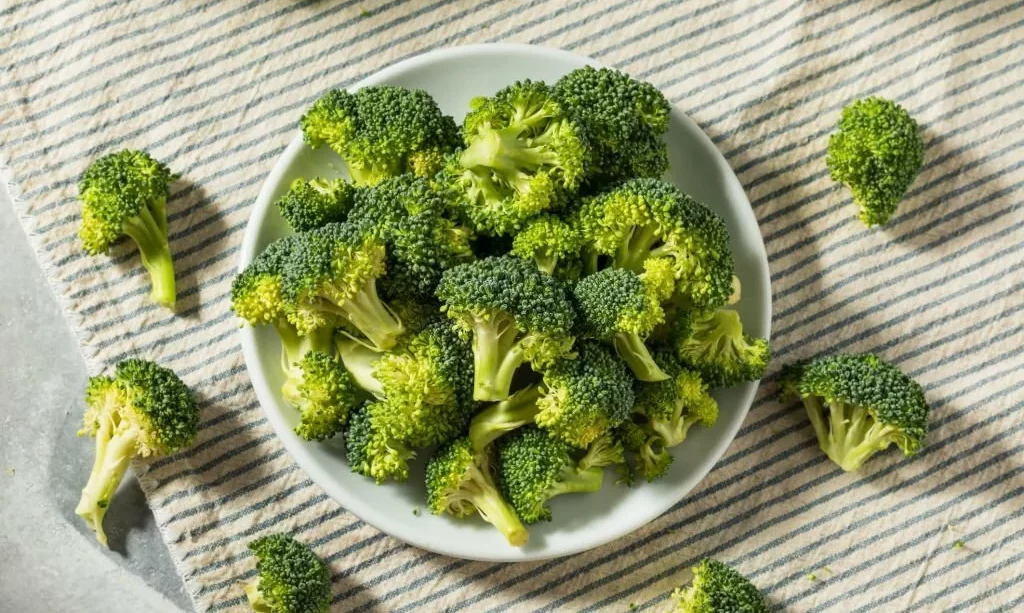Broccoletti, an intriguing and delectable vegetable, has been gaining recognition in culinary circles for its unique qualities and delightful taste. Yet, many are left wondering, “What is broccoletti, and how does it differ from traditional broccoli?” In this article, we embark on a flavorful journey to unravel the mysteries of broccoletti. We’ll explore its distinctive characteristics, its culinary versatility, and its nutritional value. As we venture deeper into the world of broccoletti, we’ll discover the subtle and not-so-subtle differences that set it apart from its well-known cousin, broccoli. Whether you’re a seasoned food enthusiast or simply curious about this green delight, prepare to be enchanted by the charm of broccoletti.
Broccoletti vs. Broccoli – What’s the Difference?
Broccoletti and broccoli are often linked due to their shared family tree, but they’re not quite identical twins. The key distinction lies in their appearance, taste, and size. While broccoli is recognized for its robust florets and sturdy stalks, broccoletti offers a more delicate and tender experience. Its florets are smaller, and the stalks are finer, making it a subtle departure from the typical broccoli you may be familiar with. It’s this delicate nature that sets broccoletti apart, making it a preferred choice for those seeking a more refined and tender green addition to their culinary creations.
The Many Names of Broccoletti
Broccoletti is a vegetable with a rich tapestry of names, reflecting the diverse regions and cultures that have embraced it. In various parts of the world, you may encounter broccoletti under names like “broccoli rabe,” “rapini,” “cime di rapa,” or “raab”. These monikers offer a glimpse into the widespread appeal of this vegetable, with each name adding a touch of cultural uniqueness. Whether you’re savoring cime di rapa in Italy or indulging in broccoli rabe in the United States, you’re likely experiencing broccoletti in different culinary contexts, each offering a unique twist on this versatile green.
Cultivation and Growing Regions
Broccoletti thrives under specific growing conditions that cater to its preferences. It flourishes in regions with cool climates and is often cultivated in the fall and spring. Ideal growing conditions for broccoletti include well-drained soil with a slightly acidic pH and consistent moisture levels. Primary regions known for broccoletti cultivation include Italy, where it holds a prominent place in Italian cuisine, as well as the United States, particularly in the Northeast. The availability of broccoletti largely coincides with its growing season, making it a seasonal delight for those with a penchant for fresh, locally sourced produce. The cultivation of broccoletti showcases the importance of understanding a vegetable’s preferred environment to yield the best results in both flavor and nutritional value.
Culinary Uses and Recipes
Broccoletti’s culinary versatility is one of its most appealing qualities. It can be found in a wide array of dishes, from Italian classics to modern, fusion cuisine. In Italian cooking, broccoletti often stars in pasta dishes, such as orecchiette with broccoli rabe, providing a slightly bitter, earthy contrast to the pasta. It’s a natural complement to garlic, olive oil, and red pepper flakes, creating a symphony of flavors. Additionally, broccoletti is a fantastic addition to quiches, frittatas, and stir-fries, where its tender florets and mild bitterness add depth and nutrition. For those seeking a healthier twist on traditional greens, it can be steamed, sautéed, or even roasted, allowing its vibrant flavor to shine through.
Nutritional Benefits
The appeal of broccoletti extends beyond its delectable taste. This green delight is a nutritional powerhouse, offering a wealth of vitamins, minerals, and antioxidants. It’s a source of vitamins A, C, and K, crucial for immune support and bone health. Broccoletti is also rich in fiber, aiding in digestion, and contains iron and calcium for overall well-being. Moreover, its antioxidant properties contribute to reducing oxidative stress and inflammation. Consuming broccoletti as part of a balanced diet can help enhance one’s health, making it not only a flavorful addition to dishes but also a nutritious one.
Broccoletti in Popular Culture
Beyond the kitchen, broccoletti has made appearances in popular culture, particularly in regions where it enjoys culinary prominence. In Italy, for instance, it’s more than a vegetable; it’s an integral part of the cultural and culinary identity. Broccoletti has been celebrated in literature, showcased in paintings, and revered in festivals, demonstrating the profound impact it has on society. In other regions, where it’s known by different names, broccoletti may not have reached the same level of cultural significance, but it continues to inspire chefs and food enthusiasts worldwide.
Conclusion
As we conclude our exploration of broccoletti, we’ve uncovered a vegetable that bridges the gap between tradition and innovation in the culinary world. Its subtle differences from broccoli, coupled with its versatility, make it an intriguing ingredient to experiment with in the kitchen. From pasta dishes in Italy to stir-fries in Asia, broccoletti adapts to various culinary traditions, adding depth and a unique touch to each recipe. Its nutritional benefits further enhance its appeal, making it not only a treat for the taste buds but also a boost for overall health. Whether you’re a food connoisseur or someone seeking to add more green to your diet, broccoletti invites you to savor its delightful flavors and explore the world of culinary possibilities it unlocks. So, the next time you encounter this green delight, embrace it as a gateway to a world of taste and nutrition.



